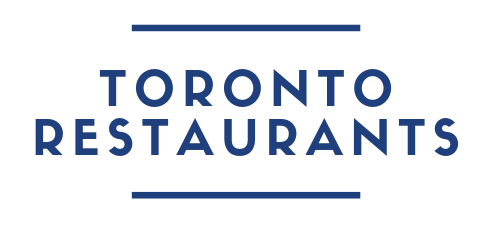Q&A with Celebrity Chef Curtis Stone
Chef Curtis Stone. Photo by Stephanie Dickison | Toronto Restaurants.
Celebrity chef and restaurateur Curtis Stone has worked at Michelin-star restaurants, opened two of his own award-winning restaurants in L.A. – Maude (named after his grandmother) and Gwen Butcher Shop & Restaurant – plus written six cookbooks, hosted numerous TV shows, and created a thoughtful range of kitchenware “designed specifically for home cooks.”
The smart, sophisticated, hardworking and multi-talented chef was in Toronto last week with Tourism Australia, promoting Australian food and wine (He is one of their ambassadors, along with Chris Hemsworth). A dinner was held at Shangri-La’s Bosk restaurant, with a menu Chef Stone created.
Here are Chef Stone’s thoughts on Australian food and wine, and the scoop on Maude’s exciting new concept:
Q: Other than fresh, local and seasonal, what is Australian cuisine?
A: It’s an interesting question. In some ways, I always say a cuisine represents, or resembles its culture. And I think if you think far enough back to the Aussie culture, you know, you’ve got to think right back to the history of the country.
We’ve only been settled for a couple hundred years by the British. Before that, we were literally a nomadic society of Aboriginal people that lived there, so it’s a very young country. It’s a very old country, but what we know as Australia today is very new. And I think with that, if you think about what happened on Day One, of the British arriving; they brought British food. It was that simple. And over the course of the next couple hundred of years, it’s continued to develop and grow. And that really happens with immigration and people coming from different parts of the world.
I always think of Christmas as the thing that typifies what you do as a culture. What we do at Christmas – or at least, what we did up until the last couple of decades – was, we cooked roast beef, roast pork or roast turkey. We had roast duck, we had carrots, potatoes and all these winter vegetables that came with the Brits, and we never changed.
It’s interesting, because in the last 20 years, we’re now serving oysters and prawns as an appetizer for Christmas lunch and cooking pieces of salmon, and having salads with tomatoes. It’s become very summery, like it should. Making pavlovas instead of Christmas pudding. And I think that shift is pretty recent.
You know, when I grew up cooking in Australia, it was either the better restaurants were European – French or Italian – and the better chefs were French, Italian and German. If you wanted to become a good chef, you had to go there and learn. Or at least work for one of them and learn European-style cooking.
And I think that happened, and it’s happened enough now, that those chefs that have gone and learned from Europe and different parts of the world have come home with knowledge and applied it to Australian ingredients and indigenous ingredients, and wrapped their head a bit more around what Aussie culture is – which is pretty laid-back, and pretty friendly, and pretty even, and our distribution of income of wealth is pretty modest. We’re relatively left wing as far as government, compared to other countries.
It’s a fascinating question. I could talk to you all night, but there’s only 15 minutes, so I’ll keep it short.
The short answer is: we’re literally a part of Southeast Asia, geographically. So a lot of what grows there grows in Australia. We have some tropical regions, cooler climates as well down in the south east, so there’s a variety of ingredients, a variety of attitudes, and a variety of cultures, ethnicities and religions. It’s not dissimilar to Toronto in the way it’s a bit of a melting pot in its ethnic squeeze, which is cool. It’s kind of fun.
The broad answer is Australian food is lots of things. Australia’s still a penal colony of the U.K. Initially, we were sent the prisoner’s of England. That’s how Australia was founded. And there’s been for a long time, a bit of an anti-authoritarian attitude. We had this famous bushranger that would steal from the rich, his name was Ned Kelly, a little Robin Hood sort of story, but he became this sort of folk hero. And to a certain extent, still is. And I think the Aussie chefs have become a bit rebellious in a similar way, to sort of break some rules and try some new things, and apply some things that didn’t necessarily make sense in the structure of European cuisine, which I think has turned into a cool thing.
I was just asked to “Cook My Culture,” something I did in New York a couple of days ago for “StarChefs.” And it made me sit down and think about it, “What is it?” And before I could answer what my food is, what’s my culture? And that’s fascinating to really consider too.
Q: What did you make?
A: I cooked some Wagyu beef from Australia because I think we do that pretty well. I’m actually the importer of it to the U.S. – David Blackmore (Blackmore Wagyu).
We have a butcher shop in the restaurant Gwen, and I wanted the best beef. And I thought, should I get Japanese beef or Australian beef? And the answer was: we should get the best beef, and the best beef, in my opinion, is David Blackmore’s Wagyu. But he has a really unique attitude towards it.
I think as a culture, we do that pretty well. David Thompson is another good example of someone that went somewhere, ended up really exceeding at what he did there. He was a chef, he worked for the Thai Royal family, speaks fluent Thai – Aussie guy – and then came back and opened a restaurant that’s now in the top 100 restaurants in the world. It’s Thai food. It’s the best Thai food you’ll ever eat. By an Aussie. It’s interesting. David Blackmore, in my humble opinion, produces the best Wagyu beef. Wagyu, by definition, is Japanese.
And I think we’ve done a little bit of that too, with our wines as well. We’ve had a lot of our winemakers travel and work in different parts of the world, and bring back that knowledge, and start creating wines that are, you know, really dynamic and what you’d expect.
Q: Has there been one ingredient that’s been particularly challenging at Maude? (The restaurant’s concept: each month one seasonal ingredient is chosen to make over 10 courses).
A: The format itself is ridiculously challenging, because you have to literally open a new restaurant once a month, throw it all away at the end of month and start again. It’s very easy to just think, “well, we can just turn the carrot puree into a pasta puree and just move things around the board.”
For me, the reason for doing it was to challenge myself. Like signing up to run a marathon. You can also get on a motorbike and drive the marathon, but that defeats the purpose. To me, [it was] to really push myself to that cutting edge again – because I did a little bit of this, then I wrote a book, did some television stuff…I had a break from the restaurant world for five years. So when I was like, “I want to do it again,” I wanted something that would get me out of bed in the morning.
You know, it’s been a real challenge. Some ingredients have been easier than others. We’ve had more success with some than others. But you get to garlic and you’re like, “right,” we do pre-dessert, dessert and petit fours as part of our format. With the petit fours, there’s three different petit fours, so you’re like, “I’ve got to come up with five sweet garlic things.” And at the beginning you’re like, “$%!#, how’s it work,” you know?
But at the end of it, you’re like, “we did stuff that’s really delicious.” And one day we’ll go on to do it when we’re not doing this concept, because you’re like, “you had to do a garlic dessert, so you did a garlic dessert.” But it was fabulous. And I’m sure one day I’ll pull it back out, and I’ll do a dish and [people] will go, “Whoa, what made you think to put garlic in it?” I think it’s part of that creative process designed to help you grow.
I don’t know if you’ve read about it, but we’re closing the restaurant on the 31st of December. And that’ll be our last service at Maude as we know it. And then we’ll reopen in January, having flipped the concept from one ingredient a month to a wine region per menu.
So we’re going to go to these regions and absorb as much as we can. Again, the same way we did it with the ingredients, it’s a deep dive. It’s like, “what’s the culture?” “What’s the music like?” “What’s the architecture like?”
Q: Gwen has been described as “redefining fine dining” in L.A. How have you accomplished that?
A: I mean, it’s a bit of an Aussie attitude to fine dining, I guess – to me. And I’ve grown up in fine dining restaurants. I’m very comfortable in them. But I know most people aren’t. And I think I’m only comfortable in them because I get it. I mean, I see the staff when they come to work in their track pants, and then they put their tuxedo on, so I’ve never been intimidated by it. So when I need some advice about wine, I’ll ask a sommelier and I’ll ask some questions, because I see them as a resource.
But what I think happens quite often in fine dining environments, people see it as a scary thing, like “oh, I’m supposed to know more than I actually know, and it’s intimidating and they’re going to say things I don’t understand.” It’s almost like saying, “Go to school, but don’t let the teacher know you don’t know everything.” It’s why you’re there. Use that resource, right?
I call it “fine dining without all the fluff.” So, take the tablecloth off; just stop all the nonsense that can happen in restaurants or that can make people feel a certain way. And just explain stuff. We do that. The idea for fine dining, for me, is yes, it should be sophisticated, it should be super delicious, but it should also be really comfortable.
Check out more celebrity interviews in At The Table.
Things change quickly. Follow Toronto Restaurants on Instagram and Facebook and subscribe to the TR Newsletter for breaking news, updates, interviews + more.
Hear of a place that’s about to open or just closed? Have an upcoming food or restaurant event? Get in touch.
Enjoy this? Like, follow and comment on Instagram and Facebook.
Forward and share using the icons below. #supportlocal

